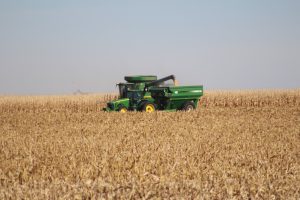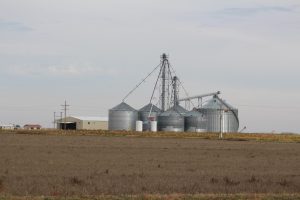K-State scientists report corn stunt disease in Kansas

By Pat Melgares, K-State Research and Extension news
MANHATTAN, Kan. – Kansas State University plant pathologists and entomologists are reporting the first known case of corn stunt disease in Kansas, coming on the heels of reports in neighboring Oklahoma and Missouri.
Row crop plant pathologist Rodrigo Onofre said that as of Aug. 29, corn stunt disease and associated symptoms have been confirmed in field corn in Sedgwick, Pratt, Stafford and Edwards counties; and sweet corn in Riley County.
“Recent scouting efforts across Kansas confirm active leaf hoppers in many other counties in central and southwest Kansas,” Onofre said.
The incidence of disease was “low overall,” according to Onofre, and much of the corn crop is in its later stages of maturity.
Corn stunt is a bacterial disease that results in severely stunted plants that often produce multiple small ears with loose or missing kernels. It may also result in leaves turning red.
“Other biotic and abiotic factors can cause red or purple discoloration in corn, so laboratory testing is important to diagnose corn stunt disease and distinguish it from other stressors,” Onofre said.
Onofre encourages producers to submit suspected samples of corn stunt to the K-State Plant Disease Diagnostic Lab. Producers can contact their local extension agent for help in submitting a sample, or follow the lab’s instructions that are available online.
Photos of suspected plant disease can be sent to clinic@ksu.edu. Questions about corn stunt disease and its symptoms can be directed by email to Onofre, onofre@ksu.edu.
Onofre said corn stunt disease has been limited in the past to Texas, Florida and California. It is spread by the corn leafhopper, which also was recently confirmed in Kansas.
K-State entomologist Anthony Zukoff also has released a video to help producers identify and collect corn leafhopper samples. The video is available online at https://tinyurl.com/KSUCLH. Questions about the corn leafhopper can be directed to Zukoff at 620-275-9164, or azukoff@ksu.edu.
“The corn leafhopper acquires pathogens within minutes of feeding in infected corn plants, but it can take up to 30 days for the leafhopper to infect healthy corn plants,” Onofre said.
As of Aug. 29, only corn stunt spiroplasma has been detected in Kansas, according to Onofre. Additional research is needed to determine the presence of other pathogens vectored by the corn leafhopper in Kansas.
More information on the disease is available in the Aug. 30 Agronomy e-Update newsletter, published weekly by K-State’s Department of Agronomy.









